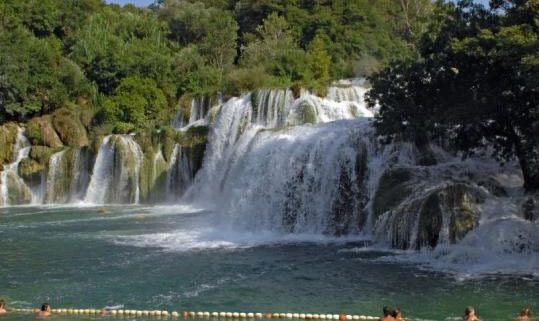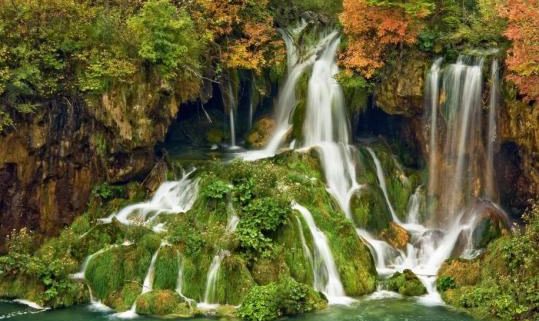NATIONAL PARKS

Krka National Park
Trip from Split takes about 1 hour. Tour in Krka lasts 3-4 hours. Full day trip.
Price: On request
The price includes:
-Vehicle up to 8 persons, english speaking driver, fuel, all roads and parkings with payment.
The price doesn’t include:
-National park ticket
Departure: on demand
There is possibility of hiring professional guide with knowledge of your national language.
The lakes of this Karst beauty, River Krka, are peaceful and silent while its numerous cascades are blaringly loud and playful.
The beauty and diversity of this river resembles a magnificent orchestral symphony under the direction of the Creator himself. For thousands of years Krka has obstinately hollowed out its path through rock and has created its remarkable waterfalls.
The peculiar travertine cascades of its waterfalls are extremely rare in the world. In the year 1985 its remarkable beauty was recognized and placed under protection proclaiming the 46 kilometres of the Krka River flow which occupy 111 square kilometres a national park.


Plitvice lakes
Trip from Split takes about 3 hours. Tour in Plitvice lasts 3-4 hours. Full day trip.
Price: On request
The price includes:
-Vehicle up to 8 persons, english speaking driver, fuel, all roads and parkings with payment.
The price doesn’t include:
-National park ticket
Departure: on demand
There is possibility of hiring professional guide with knowledge of your national language.
Plitvice Lakes National Park is one of the greatest natural wonders of Europe. Embraced by high wooded mountains, one beneath another lie sixteen beautiful lakes of crystal blue-green water.
Connected to each other by a series of foaming cascades and thundering waterfalls, the lakes are fed by many rivers and streams. Over the millennia, waters of these lakes have dissolved the limestone rock and carved out the valley in which they now lie. Through the process of sedimentation of calcium carbonate and the work of special kinds of algae and moss, tufa or travertine has been deposited, and is still deposited to form the natural dams that separate the lakes.
Since the process is going on today, just as it always has, new travertine barriers, curtains, stalactites, channels and cascades are being built and the existing ones are changing. As it is deposited, the tufa coasts the beds and banks of the lakes, giving the water sparkling beauty and petrifying trees and stones which fall into the lakes. The water keeps breaking through the travertine barriers at different places, so that the entire process of formation of lakes and dams is alive and very dynamic. This is,in fact, a continuous dynamic process of tufa formation, a unique, interesting natural phenomenon.
Nature’s construction work continues in undisturbed ecological conditions. Beside the lakes are some interesting caves in which remains of prehistoric settlements have been found. The National Park covers an area of 29482 hectares, of which 22308 hectares of forest, 217 of lakes and streams, and 6957 of meadow and farm land.
These forests, which in some places seem almost primeval, contain a wealth and variety of animal and plant life. There are deer, bears, wolves, wild boar, wildcats, small game and many kinds of birds. The waters have excellent trout. Hunting, fishing andswimming are not allowed.
There are two entrances to the National Park (Upper and Lower Lakes). On the panoramic map these are marked 1 and 2. Big notice boards at each entrance provide visitors with basic information concerning walking trails through the Park and the locations of viewpoints, car parks, hotels, post office, bus stops, first-aid posts, etc. The trails are also marked on the tickets that visitors buy when enter. All other information (accommodation, food, connections with the coast and the other part of Croatia, traffic information, etc) is provided by the Park staff in the information offices.

 English
English Hrvatski
Hrvatski Deutsch
Deutsch